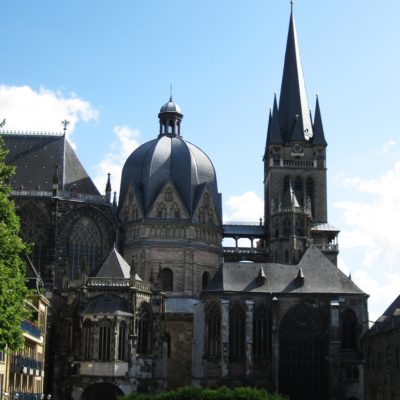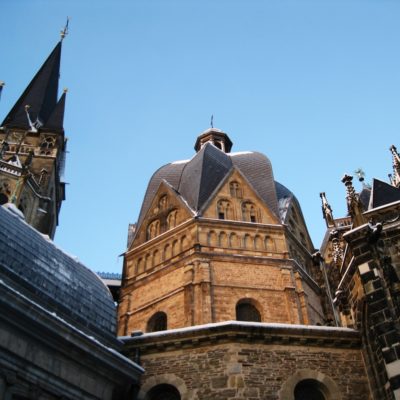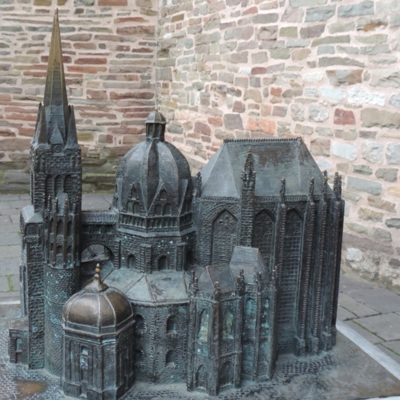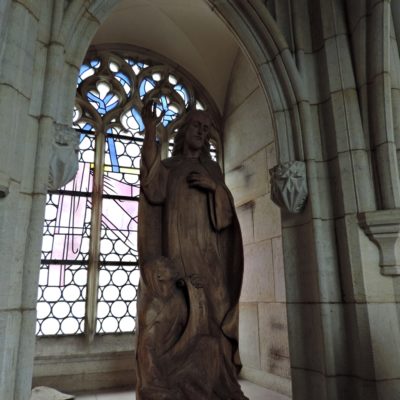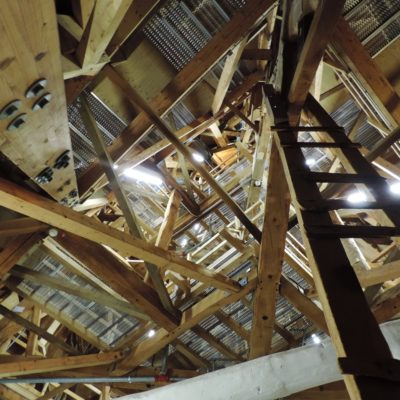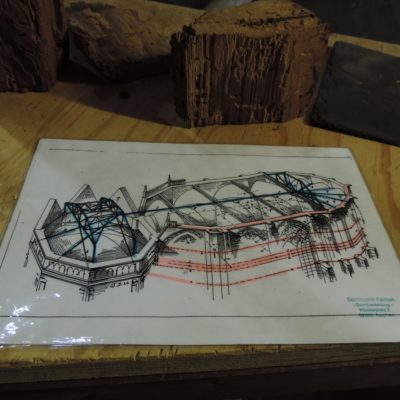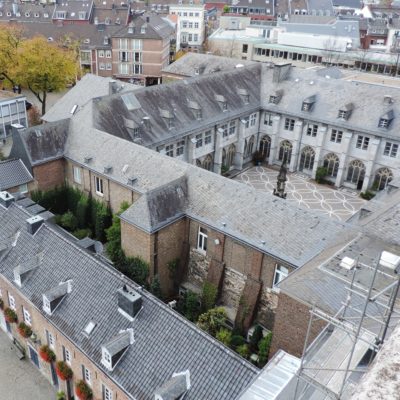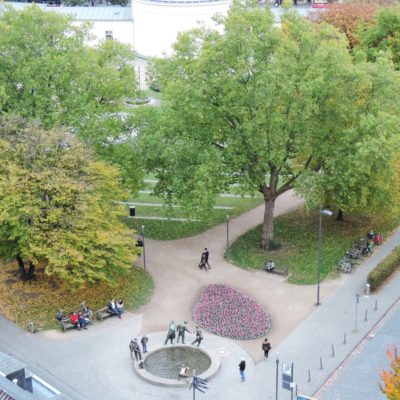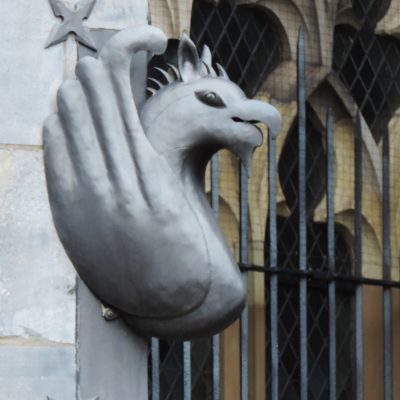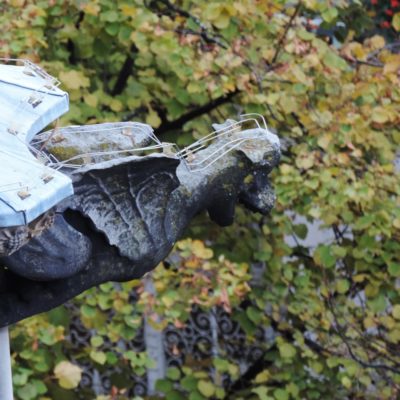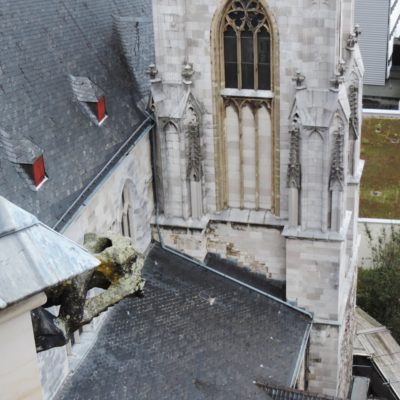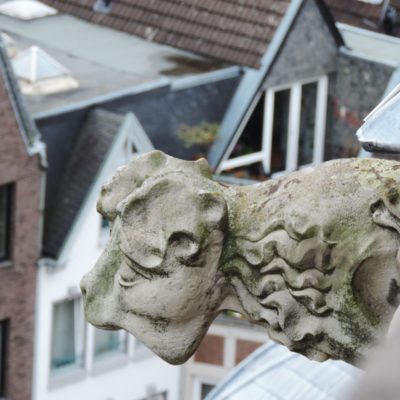My friend Jessi and I were in for an extra special treat: we had a chance to participate in a guided tour of Aachen Cathedral (Aachener Dom). This wasn’t one of the regular tours, though, but one which took us into the framework and right onto the roof.
The tour was led by the person in charge of the cathedral building, Mr. Maintz. His title in German is Dombaumeister, but translations are a bit tricky. A Baumeister is a master builder, but a Dombaumeister is more than that. Back in medieval times, this would have been the master builder (or architect, maybe) in charge of planning and building the cathedral. Nowadays, a Dombaumeister’s task is to preserve the building and repair it, where necessary. Mr. Maintz, in fact, isn’t actually a builder, but an engineer and has two colleagues who help preserve the Aachener Dom – three people for such a large and important monument really don’t seem much, I thought. Apart from being the Dombaumeister, Mr. Maintz is an excellent tour guide and managed to convey a wealth of information – even to someone like me, who has hardly any knowledge of the natural sciences or engineering.
- Aachen – Cathedral Seen From Katschhof
- Aachen – Cathedral Seen From Muensterplatz
- Aachen – Model of Cathedral
He explained, for instance, that he is in charge not only of the actual building (i.e. the stone structure), but also the heating and that this involves various aspects, such as keeping the interior of the building between certain temperatures and degrees of humidity, so as not to compromise the wooden structures, furniture or the artefacts within the church. He even stretched my grasp of chemical processes by explaining how and why stone erodes, or how to fight woodworm.
Our guide also gave a detailed account of the different building phases and the various materials and skilled labourers at hand. It is to be noted that the original building, the palatial chapel, was built around 800 AD in a style and size which was entirely unusual for this area. This is, in fact, one of the reasons that Aachen Cathedral was the first German historical monument to be awarded the status of a UNESCO World Heritage Site, back in 1978. There are several other superlatives to be found here, as well: The stained glass windows in the Gothic choir cover an area of 1.000 square meters (nearly the size of an Olympic swimming pool) and have a height of 25 meters, thus being the highest windows from the Gothic period. And if I remember correctly, the building of the palatial chapel was – at the time – the highest north of the Alps. Considering that Aachen at that time was neither a large nor an important town, it is quite astonishing that such an ambitious building project was undertaken here. But such are the perks of being an emperors’s favourite abode…
- Aachen – Cathedral Detail – Chapel
- Aachen – Cathedral Roof Structure
- Aachen – Cathedral – Structure Plan
Mr. Maintz then led us into the attic and explained how the large and – for this area – unusual structure was held together. It involved foundations five meters deep and huge iron bands around the building, as well as a deflection of pressure from the roof into the ground. If you want to find out more, I’m afraid you’ll have to read up on it or do a tour yourselves, as I don’t have sufficient knowledge of engineering to explain this properly. Apart from that I would’t want to steal Mr. Mainz’ excellent description of how statics work, which involved a grapefruit. (I kid you not.)
- Aachen – Domsingschule Seen From Cathedral
- Aachen – Money Fountain Seen From Cathedral
- Aachen – Cathedral Detail
The highlight, of course, was being able to walk along the galleries on the roof. We had breathtaking views of Aachen and the surrounding area, and it isn’t every day that you get to climb around on a cathedral. I very much doubt that the 30 German kings that were coronated in Aachen between 936 und 1531 had the privilege. But then again, they wouldn’t have had cameras, anyway. =)
- Aachen – Cathedral Detail – Gargoyle -1-
- Aachen – Cathedral Detail – Gargoyle -2-
- Aachen – Cathedral Detail – Gargoyle -3-
If ever you get a chance to participate in this special tour, do it! I am almost certain that you will not regret it, as you get to visit areas of the cathedral that are usually out of bounds and you are provided with lots and lots of information about the cathedral and its 1.200 year old history. Oh, and the proceeds actually go to preserving the cathedral, which is a pretty good thing, as well.
Please note that this blog post was first published on my previous blog ‘Inside Chrissie’s Mind’ on October 28th, 2015.

 Aachen - Cathedral Seen From Muensterplatz
Aachen - Cathedral Seen From Muensterplatz